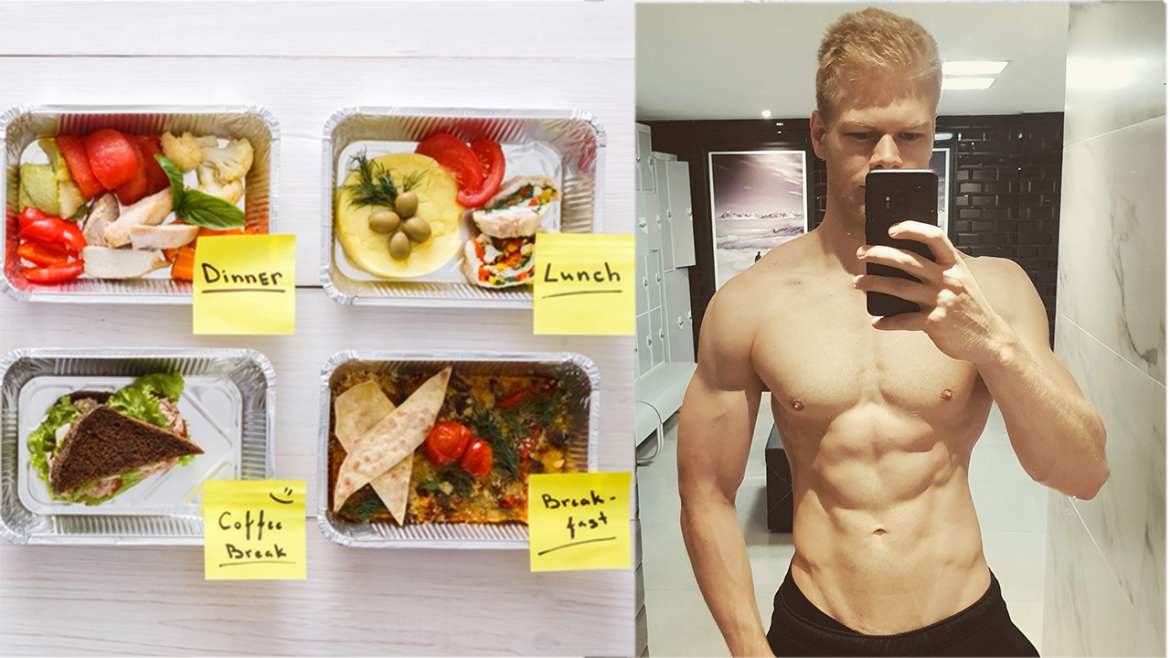Long-term results require long-term changes. I am not a big fan of short fad diets that you follow for a few weeks and then go back to eating like you did before. Instead its more effective to think about your new diet and exercise regimen as a plan for life. Now don’t be intimidated!
This doesn’t mean you will eat the same foods for the rest of your life without ever being able to eat junk food. And it doesn’t mean you will have to do the same workout for the rest of your life. Far from it. It just means that you favor small long-term changes over drastic short-term changes that don’t last.
So here are 5 steps to create these lasting changes and make long-term improvements. Implementing these will help you create a complete health and fitness mindset.
Want To Watch The Video Instead?
1. Make sustainable changes
I already touched on this but want to explain it a little further. Any changes you make have to be sustainable. This means they can’t be severely restricting or extreme. In my fat loss course, for example, I never recommend calorie deficits larger than 20%.
If you were to cut your calorie in half today you would definitely lose more weight but you would also burn out within a matter of weeks and almost inevitably hate your diet. To reach your goals you want to find ways of eating and exercising that are effective, AND that are compatible with your lifestyle. The best diet is still the one you follow and setting unrealistic goals will just hurt you.
I, for example, love chocolate. So in my diet plan even when I am dieting for weight loss I always include a certain amount of calories that is reserved for a Snickers or KitKat bar. It’s not a lot but it keeps me sane and happy with my diet.
2. A few small changes go a long way
Research shows that trying to make too many changes at once is one of the main reasons why people fail at implementing good eating and exercise habits.
So instead of redesigning your entire diet all at once, and trying crazy diet schemes, you want to begin by making only a few small changes. Seeing how small changes lead to results will motivate you to keep going and tackling bigger tasks in the future. They add to big results, and such successes make it easier for you to increase your efforts.
Some of my students start by only doing a few push-ups a day and eating a few more vegetables and fruits and cutting down candy. Nothing big but you’d be amazed of how much better they feel and look after two to three months.
3. Focus on the process rather than the results
Obviously, we all want to see results fast. This is normal and if you stick to what this course teaches you will see them. But especially beginners are often eager to see results within weeks or even days.
To not lose motivation early I recommend you focus on the process rather than the results at first. Doing this will keep you moving forward and you will actually get satisfaction out of following the processes.
One of the biggest realizations I had was that you can be happy while you are getting fit instead of waiting until you have reached your long-term goal.
4. Accept responsibility and take control of your life
No more excuses! You cannot blame other people and circumstances for your health and physical condition. Playing the victim has never worked as a strategy for improvements. Of course, at some point we all make excuses sometimes even valid ones, but keep in mind that you and only you are responsible for your success.
You have to make your fitness a priority and once you do you will find the time needed for preparing healthy meals and working out. This is when you will see some real progress.
5. Know your „why“
You know HOW you are going get in shape, but what you must also be able to answer is WHY you want to get in shape. This reason needs to be something intrinsic that is based on personal satisfaction, rather than satisfying others.
Most people rely on extrinsic motivations, which have an external reward. For example, you might want to impress your friends by looking better.
This can be a good starting point, but relying on extrinsic motivations to sustain you long term is dangerous. Because if you don’t receive the response you expected, you lose your motivation and quit.
Having a solid „why“ doesn’t require an extrinsic validation because you are doing it for yourself. A simple yet effective intrinsic motivation would be simply taking control of your life and becoming a better person – not in the eyes of others but by your standards.
3 helpful questions to ask yourself when trying to find your “why” are:
– Why do I really want to improve my fitness?
– Why are health and fitness really desirable to me? (how will it improve my life)
– What are the consequences of me not doing it?



